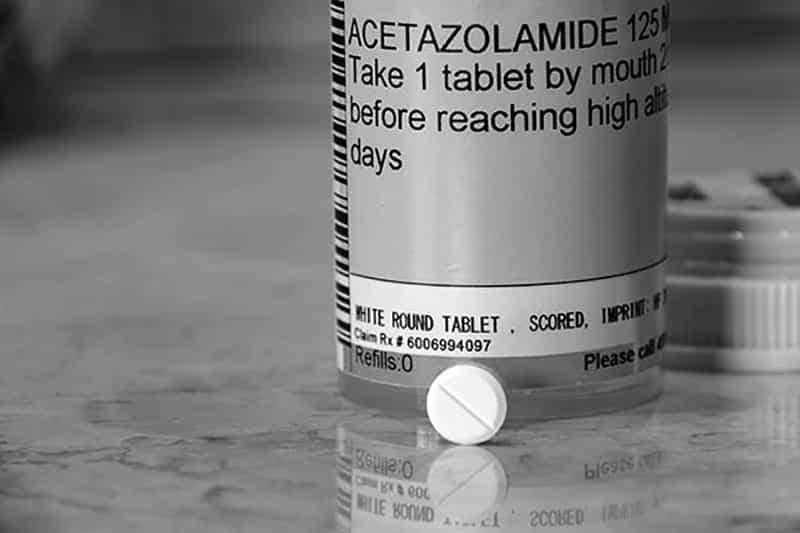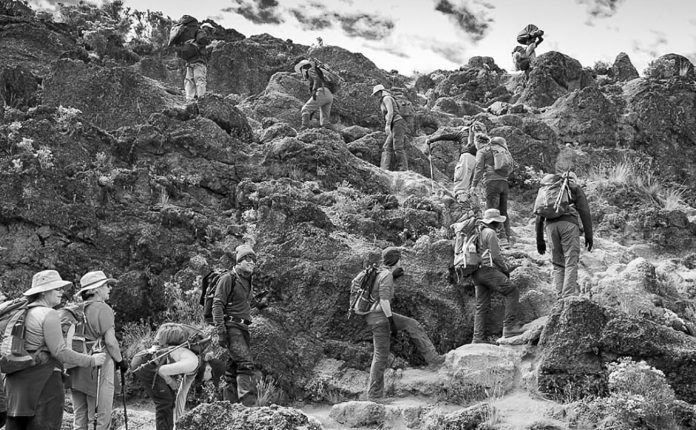Answer: Is It Safe to Climb Kilimanjaro?
Really…How Safe is It to Climb Mount Kilimanjaro?
Africa’s tallest peak, Kilimanjaro, is included in the prestigious “Seven Summits” club. Volcanoes that are extinct and inactive make up this; however, Mount Kilimanjaro is generally risk-free compared to other mountains of a similar height.
If you’re well-prepared, do your research, and follow your guide’s advice, climbing Kilimanjaro shouldn’t be too dangerous. Altitude sickness is the leading cause of death among tourists, accounting for 10 deaths each year.
Hundreds of thousands of tourists visit Mount Kilimanjaro each year because the mountain does not require any advanced climbing skills.
It is unnecessary to use crampons or other heavy climbing gear because Kilimanjaro is near the equator and does not get as cold as other mountains of a similar height.
Even though Mount Kilimanjaro is primarily safe, there are still a few dangers to be aware of if you want to climb it.
We are sure you among the many people who have always been asking themselves the same question over and over, “Is it safe to climb mount Kilimanjaro?”. The quick answer is the main dangers you may encounter include altitude sickness, accidents, harsh weather, and rockfall. Each of these components will be examined in turn.
Kilimanjaro High Altitude Sickness
One in three people who attempt to climb Kilimanjaro make it to the summit; the most prevalent reason for a climber’s evacuation is altitude sickness.
The oxygen-deprived air at higher altitudes is what causes altitude sickness. Almost anyone, no matter their age or health, can be affected by it.
Kilimanjaro’s highest point is 5,895m or 19,341feet above sea level. Ensure that your body adapts appropriately, improves cardiovascular fitness, and completes altitude training. Include an area acclimatization trek as part of your trip preparations.
Even if you think you’re in great shape, you should see a doctor to make sure you’re okay to climb Mount Kilimanjaro before making any plans.
This is especially important if you have a prior heart or respiratory condition or are over 50. You should avoid smoking, drinking alcohol, and taking medication while climbing Kilimanjaro (even sleeping pills).
Unlike Everest, it’s unnecessary to use bottled oxygen to climb Kilimanjaro. This isn’t a good idea because it can mask the signs of a severe case of mountain sickness.
Acetazolamide (Diamox), a medication that helps the body adapt to a new environment, can be prescribed by a doctor. Tingling in the fingers and toes is one of the more unusual adverse effects that some patients experience while taking this medicine, despite its excellent efficacy.

Allowing your body to adapt and taking appropriate rest days are vital when ascending a particularly tall mountain.
If you ascend too quickly, become dehydrated, or push yourself too hard, your body won’t be able to adjust to the higher altitude as it usually will be. It would be best if you had someone who could keep an eye on you at this stage.
The best routes up Mount Kilimanjaro are at least eight days long, have an excellent ascending profile, and follow the cardinal rule of mountaineering: hiking high and sleeping low. These are the characteristics of the safest routes. Crater Camp, a high-altitude camp, is enticing, but it’s also dangerous; therefore, it’s only done sometimes.
Despite the altitude sickness is it safe to climb Kilimanjaro? Yes, we prioritize providing our guides with the training and tools needed to do their jobs safely and climb Kilimanjaro successfully.
As Wilderness First Responders, numerous travel agents’ guides are trained in first aid and CPR. You will be asked a series of Lake Louise Scoring System for Altitude Symptoms questions and have your lungs, pulse, and oxygen saturation levels monitored daily as part of most travel agents’ daily health checks.
Our Tanzanian guides will remind you to stay hydrated and move slowly, or “pole pole,” as they say here. If you or anyone else in the group starts to feel unwell, don’t hesitate to tell your guide. Good communication is vital.
Early-stage altitude sickness is advantageous because it often provides early warning signs before becoming severe.
Vertigo, headache, and shortness of breath are all mild signs of severe mountain sickness. It is best to turn around when these symptoms become more severe, including vomiting and coordination concerns.
We provide at least one guide for every two climbers in compliance with the rules of Kilimanjaro National Park. If you cannot continue for any reason, a medically-qualified guide can safely take you back down the mountain while the rest of the group continues on their journey.
A few people may ignore these warning signs until they experience more significant symptoms.
In severe altitude sickness, sufferers are frequently confused, disoriented, unable to walk, and have a cough and difficulty breathing even when at rest.
This attitude puts you at risk for high-altitude cerebral edema (HACE), fluid accumulation in the brain and lungs, and high-altitude pulmonary edema (HAPE). Unless you get down to a safe altitude and seek medical attention, these conditions can be fatal.
With oxygen tanks and masks (and the know-how to use them) and a stretcher, your guides can safely take you down the slope in these scenarios. However, most of the paths on Kilimanjaro are easy to depart from the mountain’s peak.
Kilimanjaro Search and Rescue can do helicopter evacuations in extreme instances if the right travel insurance is in place. As a result, helicopters should only be used as a last resort when all other options have failed.
The Kilimanjaro Potential Tragedies
A minor injury, such as a sprained ankle on Kilimanjaro, might soon turn into a catastrophic one due to the difficulty of getting to a hospital in a remote location. The situation becomes much more critical in a severe emergency, such as a heart attack.
Therefore is it safe to climb mt Kilimanjaro? Yes, when you obtain a trekker’s travel insurance, valid up to 6,001 meters above sea level. Trekker insurance is a must if you plan to trek at such high altitudes. If a helicopter rescue is necessary to get you to a hospital, your insurance covers it.
Mount Kilimanjaro’s Weather
Compared to Mount Everest, Kilimanjaro’s microclimates may bring everything from severe winds to extreme temperature changes.
Always dress in layers in case the weather drops below freezing without warning. Snow and glaciers can be found at the summit, depending on the season.
Don’t be scared to ask your tour operator if you don’t understand something.
In addition to bringing gloves, stockings, and a scarf to keep your hands warm, you should also apply sunscreen and wear sunglasses to protect your eyes from the strong sunlight.
Mount Kilimanjaro Rockfalls
Because of its rock composition, Kilimanjaro doesn’t have the deadly crevasses of other large mountains. Its trails also don’t cross glaciers or ice, but there are some spots where rockfall can occur suddenly.
Several people have been killed while exploring this part of the Breach; thus, most tour companies steer clear of this section. Don’t hesitate to contact us if you are interested in ascending through the Western Breach or you have “Is it safe to climb Kilimanjaro?” questions.
In some places, you’ll encounter cliffs, but nothing that common sense and the help of your guide can’t protect you from. It’s a trekking peak, so most pathways aren’t too tricky, but at the Barranco Wall, you’ll have the opportunity to try some rock scrambling.
Other Details
The last thing you want to do is stick to the altitude limits and pick the best route in the world, only to become sick.
To maintain a healthy digestive tract, wash your hands before eating and avoid food sources like street vendors, fresh fruits and vegetables, and tap water.
Preparing for your holiday is also essential if you don’t want to become sick halfway up the mountain.
Food prepared on the mountain for you is of the highest quality and prepared under strict hygiene standards. You can find out more about Kili’s diverse culinary traditions here.
Ensure you are up to speed on the necessary vaccines by checking the most recent information.
Even though you won’t be exposed to malaria on Mount Kilimanjaro, you may need to take antimalarial medication if you’re traveling before and after your trip.
Is it Safe to Climb Kilimanjaro?
If you’re well-prepared, do your research, and follow your guide’s advice, climbing Kilimanjaro shouldn’t be too dangerous. An estimated 10 deaths each year are attributed to visitors, and the bulk of these deaths can be attributed to avoidable altitude.
Because of the inherent perils of a remote location, you can’t evade that Mother Nature has a secret weapon up her sleeve. This once-in-a-lifetime chance can only be fully appreciated by sticking to mountaineering best practices.
Lastly, and perhaps most importantly, it would help to climb with a professional, well-recognized tour operator who seriously takes your well-being and safety on the mountain.
Most tour operators’ guides are highly trained and qualified, ensuring that you have the best possible opportunity for a safe summit and, more crucially, a safe return home when you book with us.
For more articles related to Things to Do in Tanzania (Zanzibar), click here!


































